Marketing is Focused on the Masses Instead of Individuals

Company engineers, designers and marketers are coming up with some fantastic products and product ideas. They’re just having a helluva’ time convincing folks that they’ve gotta’ have them.
They’ve gotten increasingly good at ad tracking – you know, visit a site to look at products. Go to another BAM! There it is again, another BAM! And another…
Come on, it’s kinda’ cute. Spooky, but cute.
Companies are tryin’ … you’re just not buyin.’
The problem is they’re focused on making you want to buy their stuff, not making the stuff people want.
So what’s on the horizons right now?
- Smart home things with so many ways to access, you wonder why folks bother locking their door
- The evolution of the smart car that 12-year-olds can hack. It was designed so people don’t have to drive on roads that have so many potholes. It’s no wonder you don’t want to drive
- Smart toys that occupy kids and tell data gatherers about the kids, their families and friends
I know what you’re going to say … “But Steve said, ‘A lot of times, people don’t know what they want until you show it to them.’”
But you aren’t Steve.
And he also said, ““We built [the Mac] for ourselves. We were the group of people who were going to judge whether it was great or not.”
That message – along with the output of a team of world-class designers – resonated with creative people around the globe and he had a vocal army of Mac advocates when the idea of having other people recommend/sell your product was in its infancy.
Today, using influentials and product advocates is a really big deal in marketing.

According to the Wall Street Journal, there are over 200 companies with basically the same pitch, “We’ll hook you up with the people who can influence others so your web traffic soars and they buy your stuff.”
Kobe jumping into a Kia doesn’t make me want to run down to the dealership.
Ellen DeGeneres’ Oscar selfies with her Samsung phone a few years ago didn’t convince my daughter to swap out her iPhone, but Twitter said it was retweeted and seen more than 32 million times and the marketing value was worth $1B dollars. Did it move the sales needle? Not sure.
I’ve never been convinced that celebrity endorsements of products do much good because I know they’re getting paid to talk about, show, play with the product for a few minutes.
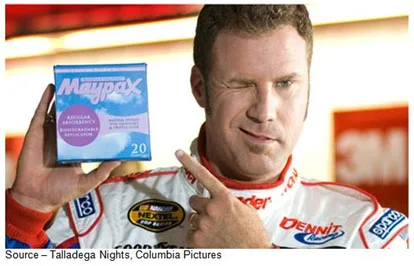
But do trending YouTube, Facebook, Instagram, Snapchat influencers have the street credibility marketing folks need?
Social influencers must have some impact I suppose, at least to marketers; but I think marketers are over estimating how gullible the consumer really is.
Dude/dudette, the stuff is nothing more than an advertorial. You work out a mini marketing plan, put together the messages you want them to push out there, they do it and you pay them.
That’s about it.
It got so bad a few years ago that the FTC (Federal Trade Commission) set down a ruling that bloggers had to identify who was paying them for writing about the products.
The blogesphere was in a tizzy that the labels were going to put them out of business.
Fast forward a few years and now we have a new young crop of folks who are making a pretty decent living doing YouTube clips, Facebook posts, Instagram links and Tweets hawking the products.
They’re simply looking for ways to make money. And it just so happens a marketing person is looking for some way to quickly buys his/her way into the large social media audience without doing a lot of work.
Perfect but …
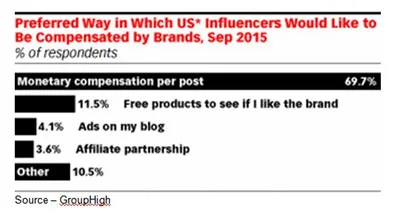
When the checks quit coming in, so do the video clips, posts, links, and tweets.
So much for influence!
You can’t buy trust.
IMO there are two areas where there are credible reasons, opportunities and a real need for companies and brands to work closely with folks:
- Advocates: People who are visible and respected people in their fields of expertise that a broad number of people listen to and trust. People who use a product/service, talk about it honestly/credibly where their integrity is more important to them than simply getting free product or special consideration
- Real users: Regular people out there who have an admittedly smaller sphere of influence – friends and family, but are the folks individuals turn to when they have a question, issue, problem
Advocates
These are people who have a real job and an audience that follows/trusts their recommendations.
They already know the company/product (that means marketing goes the extra mile to ensure they have all of the background information they want/need). They may get free product to test/use or they may get hefty discounts.
When they have questions or issues, they are addressed immediately … and resolved to the advocates’ satisfaction, not marketing’s.
If the relationship is long and strong, the advocate may even receive early versions of the product to test/review so the design can be reengineered/tweaked to make the product better for the broader customer base.
It’s a relationship, not a product pitch.
If it doesn’t meet their expectations, they usually don’t write a negative review; they do worse … they ignore it and the silence is deafening.
Are they compensated? Yes/No.
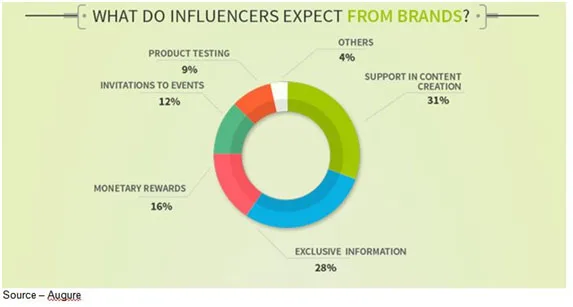
They may receive paid speaking gigs, consulting fees and/or free product.
But through it all, their reputation (and reach) is enhanced because people trust what they say about products/services.
It’s all about being authentic.
There’s no BS, no trendable tie to the product or company. The value is their real, deep expertise and understanding of the subject which real people out there respect.
Both sides live up to the audience’s expectations. Everyone wins.
Real Folks
Marketing folks sweat bullets to create just the right copy and visuals that are going to convince the greatest number of people out there that the product/service is the ideal solution for them.
But according to a Reevoo study 70 percent of consumers believe and trust consumer reviews and comments over the stuff they see, hear, and read from marketing!
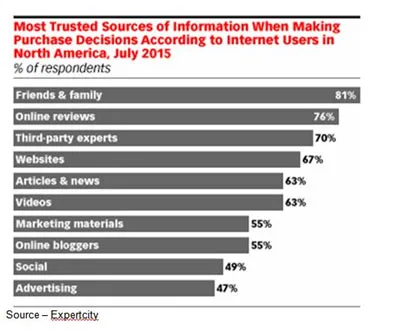
As much as he likes (wants companies, brands) to advertise on Facebook, even Zuck admits consumers talking to consumers is very effective.
Awhile back he said, “People influence people. Nothing influences people more than a recommendation from a trusted friend. A trusted referral influences people more than the best broadcast message.”
How valuable?
Admittedly, air travel sucks today; but last year, the Wayne Huang Research Team found that fast response by airlines has value. They found that when airlines responded to customer tweets in less than six minutes, the customer was willing to pay almost $20 more for that airline in the future.
And they were 41 percent more likely to recommend the airline.
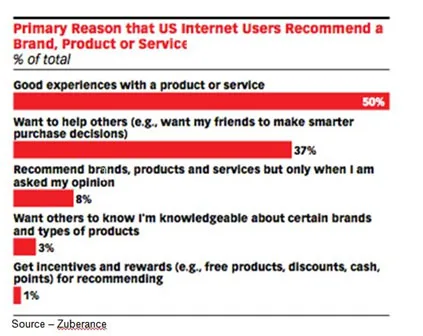
Paying attention to your customers has value you wouldn’t believe.
Assisting them and advising them has strong ROI (return on investment).
If the online customer comment/review is positive, a personal note thanking them takes very little time but it speaks volumes about the company’s interest in the success of its customers.
If the customer has issues that are promptly addressed, it also delivers a positive message to the customer.
In fact, these comments can be a valuable source of market research that you can us to develop new products/services, improve current products and even expand sales just by new uses of existing technology.
We live in a world where real life trumps lame-lipped rhetoric from supercharged social stars.
The brand advocate and casual consumer are an invaluable army of supporters who will deal out recommendations to friends, family and others on a consistent basis that tangibly produce interest and sales.
However, you often can’t track this by scraping the web.
A study by Synovate found that 57 percent of their respondents made their WOM (word-of-mouth) recommendations using email. Thirty-five percent provided their recommendations on Facebook.
Sometimes, just because you can’t measure the support doesn’t mean it has no value.
 Then ask folks to help like Batman did, “I want you to do me a favor. I want you to tell all your friends about me.”
Then ask folks to help like Batman did, “I want you to do me a favor. I want you to tell all your friends about me.”
Working hard at doing the right thing does pay off in the long run.
# # #